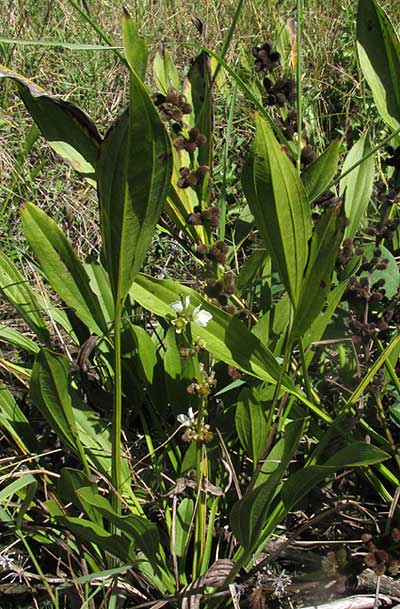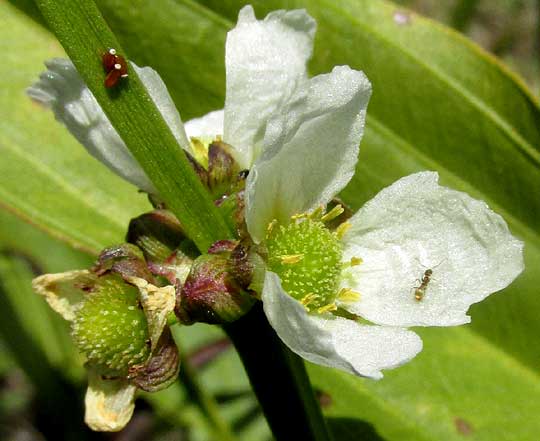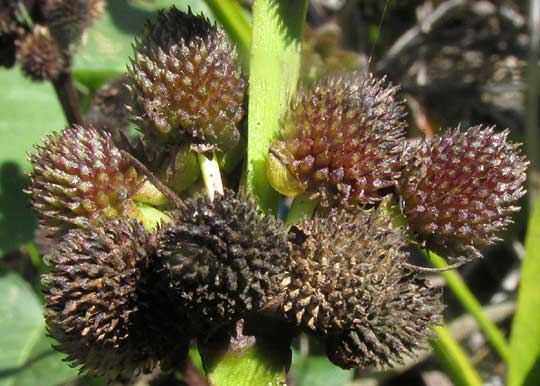Excerpts from Jim Conrad's
Naturalist Newsletter
from the December 14, 2014 Newsletter issued from Río Lagartos, on the Yucatan Peninsula's northern coast (~N21.60°, ~W88.16°), Yucatán state, MÉXICO
BURHEAD
On the road through the marshes between Río Lagartos and San Felipe, at the muddy edge of a shallow pond on the verge of drying up, here at the beginning of the dry season a nice colony of semi-aquatic plants turned up. Their thigh-high, narrow leaves looked a little like the North's weedy Narrow-leafed Plantain, but unlike the weedy plantain these plants produced flowering heads with pretty, white blossoms in widely spaced whorls, as shown below:

The narrow leaves were interestingly veined, with many cross-veins connecting long primary veins that ran the leaves' lengths, as shown below:

Each flower bore three white petals and about ten stamens, but instead of having one pistil in the blossom's center -- the usual situation -- there were many packed closely together into a greenish eye, as shown below:

These flowers must have been late-season ones, for most of the pond's many plants bore pea-sized, burry heads consisting of numerous sharp-topped, achene-type fruits, as shown below:

In North America maybe the best known members of the family to which this plant belongs are the aquatic arrowheads or duck-potatos, which produce similar flowers and fruiting heads, but whose arrow-shaped leaves with long, sharp-pointed, lower lobes are very unlike our currant plant's. You might enjoy comparing our present plant with an arrowhead species at www.backyardnature.net/n/h/calycina.htm.
Arrowhead/duck-potato species and our current roadside plant all belong to the Water-Plantain Family, the ALISMACEAE, whose members are mostly aquatic and semiaquatic. In many older books our plant is listed as Echinodorus andrieuxii but now most experts use the name ECHINODORUS SUBALATUS. The species isn't well known in the English speaking world so it bears no good English name. However, members of the genus Echinodorus often are called Burheads or Amazon Sword Plants, so we'll just call our plant Burhead.
Burhead occurs generally in tropical American wet places, from Mexico and the Caribbean south deep into South America.
Our North American arrowheads/duck-potatoes often produce starchy tubers that ducks as well as very hungry people eat, but Burheads don't produce such tubers. However, it's easy to visualize sparrows clinging to the plant's fruiting heads, nibbling on tiny, achene-type fruits.